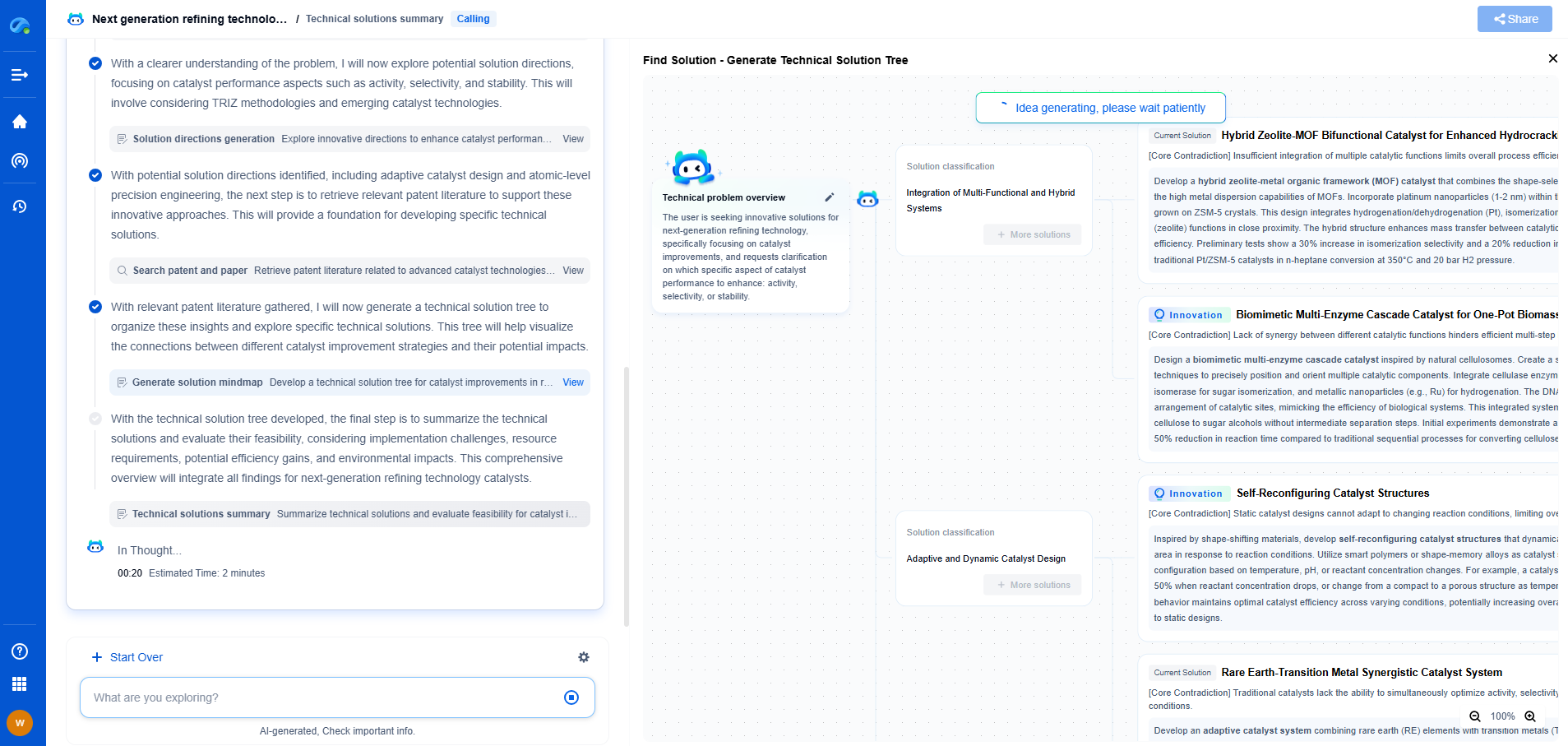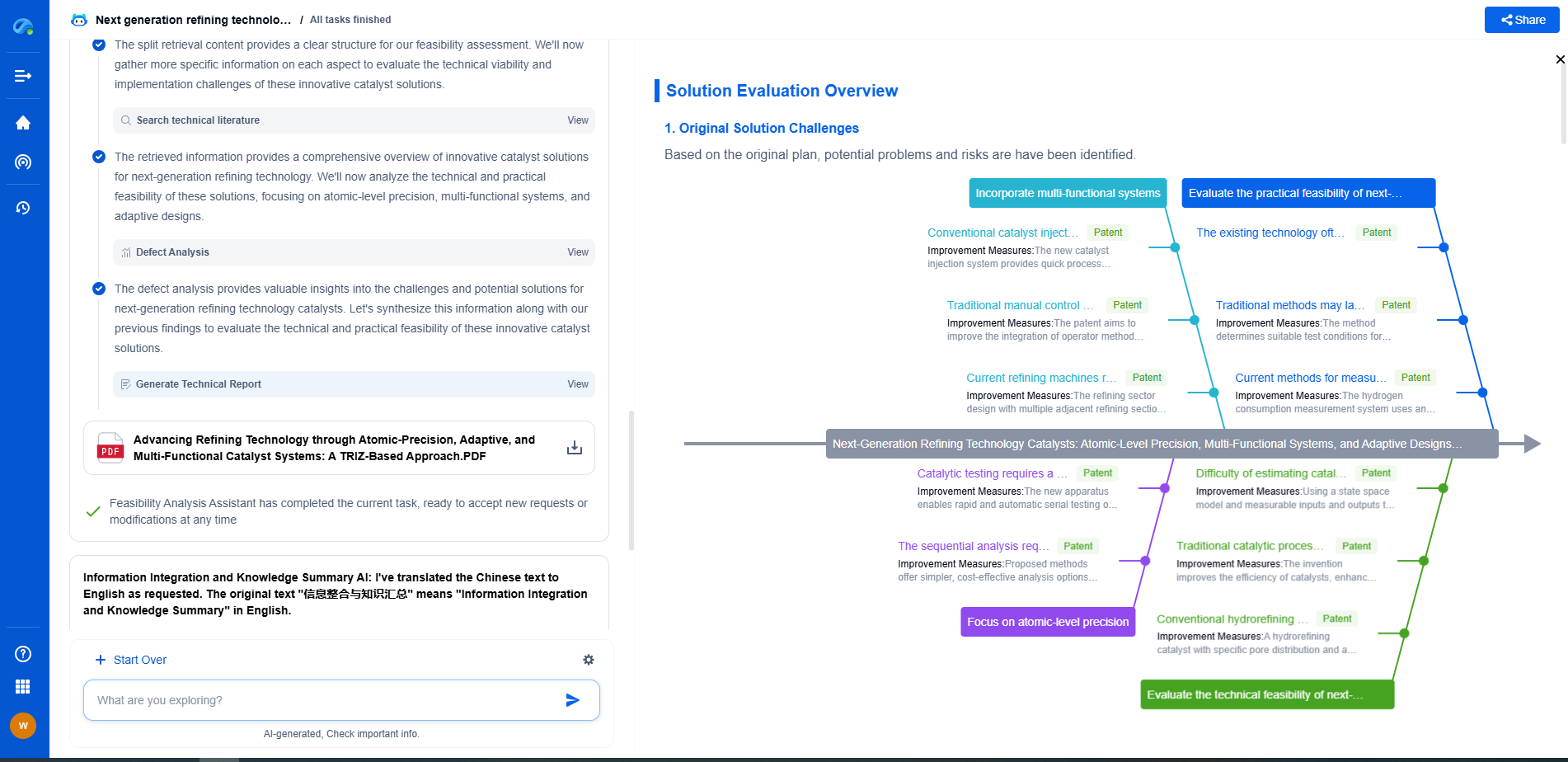Gear Hobbing vs Gear Grinding: What’s the Difference?
JUL 2, 2025 |
Gear manufacturing is a sophisticated and precise process that plays a critical role in a wide variety of industries, from automotive to aerospace. Two of the most common methods used in gear production are gear hobbing and gear grinding. Both techniques are essential in their own right and serve different purposes in the creation of high-quality gears. This article explores the differences between gear hobbing and gear grinding, highlighting their respective advantages and applications.
Understanding Gear Hobbing
Gear hobbing is a machining process that utilizes a specialized cutting tool known as a hob to progressively cut the teeth of a gear. This technique is widely used due to its efficiency and versatility. The hob rotates at high speed and synchronizes with the gear blank, cutting the gear teeth in a continuous, controlled motion.
Advantages of Gear Hobbing
One of the primary advantages of gear hobbing is its speed. The continuous cutting action allows for rapid production of gears, making it ideal for large-scale manufacturing. Additionally, gear hobbing is highly versatile and can be used to create a wide range of gear types, including spur gears, helical gears, and worm gears.
Applications of Gear Hobbing
Gear hobbing is particularly suited for manufacturing gears that do not require extremely tight tolerances or high surface finish. It is commonly used in the production of automotive gears, industrial machinery, and any application where speed and efficiency are prioritized over the finest precision.
Introduction to Gear Grinding
On the other end of the spectrum is gear grinding, a finishing process that involves the use of a grinding wheel to achieve precise gear dimensions and surface finishes. Gear grinding is a crucial step in the production of high-precision gears, ensuring that they meet exact specifications.
Advantages of Gear Grinding
The primary advantage of gear grinding is its ability to produce gears with extremely tight tolerances and superior surface finishes. This process is essential when the highest degree of accuracy is required, such as in aerospace applications or high-performance automotive components. Gear grinding also enhances the longevity and performance of gears by reducing friction and wear.
Applications of Gear Grinding
Gear grinding is typically used in applications where precision is critical. It is the preferred choice for manufacturing gears in industries that demand high performance and reliability, including aerospace, automotive racing, and medical devices. Any application that requires the highest quality gears will benefit from the precision of gear grinding.
Comparing Gear Hobbing and Gear Grinding
While both gear hobbing and gear grinding are essential in the gear manufacturing industry, they serve different purposes and are suited to different applications. Gear hobbing is the go-to process for rapid production and versatility, making it ideal for high-volume manufacturing environments. On the other hand, gear grinding is indispensable when precision and surface finish are of utmost importance, albeit at a slower production pace and higher cost.
Conclusion
In conclusion, choosing between gear hobbing and gear grinding depends largely on the specific requirements of the gear being produced. While gear hobbing excels in speed and versatility, gear grinding is unmatched in precision and finish quality. Understanding the differences between these two processes allows manufacturers to select the most appropriate method for their needs, ensuring that the gears produced meet the desired standards of quality and performance. As technology continues to advance, both gear hobbing and gear grinding will continue to play vital roles in the manufacturing of gears for a multitude of applications.
Boost Innovation in Gears & Transmissions with Patsnap Eureka
Whether you're designing a next-gen planetary gearbox or optimizing gear tooth profiles for noise reduction, keeping up with the fast-evolving landscape of mechanical transmissions requires more than just experience—it takes insight, speed, and smart tools.
Patsnap Eureka, our intelligent AI assistant built for R&D professionals in high-tech sectors, empowers you with real-time expert-level analysis, technology roadmap exploration, and strategic mapping of core patents—all within a seamless, user-friendly interface.
Whether you're streamlining a manual transmission system or exploring electromechanical actuation, Patsnap Eureka helps your team move from concept to novelty faster than ever.
👉 Experience Eureka in action—request a personalized demo today and see how AI can revolutionize your gear innovation workflows.
- R&D
- Intellectual Property
- Life Sciences
- Materials
- Tech Scout
- Unparalleled Data Quality
- Higher Quality Content
- 60% Fewer Hallucinations
Browse by: Latest US Patents, China's latest patents, Technical Efficacy Thesaurus, Application Domain, Technology Topic, Popular Technical Reports.
© 2025 PatSnap. All rights reserved.Legal|Privacy policy|Modern Slavery Act Transparency Statement|Sitemap|About US| Contact US: help@patsnap.com

